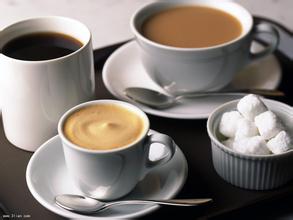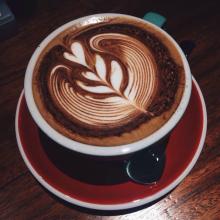The Origin of Bali Coffee introduction to the Flavor description of planting History and Culture
Around the 10th century, Indian civilization influenced the whole of Southeast Asia and was introduced into Bali through Java, providing the embryonic form of later Balinese literature, art, social organization and politics. In the 13th century, the Hindu Javanese began to rule Bali, and the introduction of Islam into Java in 1515 prompted a large number of Hindu monks, aristocrats, soldiers, craftsmen and artists to flee to Bali, resulting in the golden age of Bali in the 16th century.
It was then that white people from Europe began to visit Bali. In the description of Dutch explorers
Balinese photography style
Bali photography style (7 photos)
The mysterious color of Balinese pagans, rich social culture and warm climate made the Dutch curious and fascinated, imagining that as long as Dutch civilization and commerce were brought into Bali, they could lead Balinese to a better future.
In 1908, the Dutch flag was finally planted all over Indonesia and Bali, and the Bali aristocracy ended the era of aristocratic rule in several Puptan rituals that committed suicide for dignity. The Dutch ruled Bali for 34 years, then the Japanese occupied it for another three years during World War II; it was not until 1949 that the Netherlands withdrew from Indonesia with the intervention of the United Nations, and the moderate Bali of the islanders naturally became a province of Indonesia after independence.
Buddhism and Hinduism began to be introduced into Bali during the dynasty of Sharentra, the Buddhist kingdom of Java. Elka unified Bali and Java for the first time, and then after the Neo-Keshari dynasty, Manopacher, the Hindu kingdom of Java, reunified the two places in 1343. Hinduism began to enter Bali on a large scale and integrated with the original Buddhism. In 1515, the Islamic Kingdom quietly emerged and replaced Manobacher, so many Hindu elites fled to Bali, thus beginning the prosperity of Hindu civilization.
In 1862, in the resplendent Palace of Versailles, the Sun King Louis XIV sat dangerously, the priceless, legendary 67-carat blue diamond of hope on the crown, dazzling, and the aristocratic ministers present at the court were dressed in gold and silver. They are waiting for the ambassador from the distant and magical ancient oriental country-Suleiman Ali Suleiman Ali.
The mission of Ambassador Ali's visit is to use circuitous coffee diplomacy to disintegrate the French dynasty, which is preparing to move eastward. Luxurious and tasteful ornaments, wonderful music, well-cooked food. The social gathering held by Ambassador Ali immediately became a popular place in Paris. Everything there is so admirable and intoxicated. What is even more wonderful is a "fantasy drink" introduced by the ambassador. The silk cloth, made in Damascus, was made in Damascus. The exquisite porcelain cup on the silver tray came from as far away as China. The Nubian Negro, dressed in bright Turkish clothes, was handsome, obedient and considerate. He knelt down and poured steaming, fragrant black soup into the guest's porcelain cup. This scene is a wonderful experience that the ladies have never experienced before.
The coffee party completely conquered the Paris aristocracy, and Ambassador Ali won the heart of the princess. Soon there was good news from Versailles that the Kingdom of France and Sumatra formed a friendly alliance.
In 1866, Ambassador Ali opened the first coffee shop in Paris, France, under the name of his hometown "Bali Coffee BLD Coffee". Until today, the "Bali Coffee" near the place Bastille in Paris is still permeated with a strong aristocratic culture. The strong cultural atmosphere here is like the fragrant fog drifting out of the coffee cup, which can be smelled and within reach, and the fashion formed by the party has not only affected Paris for nearly a century, but also promoted the spread of coffee culture to the world.
Bali coffee, known as "aristocratic coffee", is the most classic of French coffee culture. It is very popular both in France and in Europe and around the world. In particular, it is permeated with a strong aristocratic culture, and it is a favorite of coffee lovers.

Important Notice :
前街咖啡 FrontStreet Coffee has moved to new addredd:
FrontStreet Coffee Address: 315,Donghua East Road,GuangZhou
Tel:020 38364473
- Prev

Fresh and elegant Santo Domingo Coffee Manor Flavor description planting Environment introduction
Most of the old buildings for people to watch are concentrated in the old city. Piaget Street was the busiest area of Santo Domingo, flanked by a variety of ancient European palaces and temples: the Goran Palace, built from 1510 to 1512, was the Government House of the first Governor Diego; the ruins of St. Nicholas Debari Hospital, the first hospital in the Americas built from 1503 to 1508, is the West Indies.
- Next

Introduction to the Variety planting Environment Manor of Costa Rican Yerzaro Coffee producing area
Coffee is an important economic source of Costa Rica. It was introduced in 1808 and has been cultivated for 200 years. Costa Rica has 1x3 population invested in newly developed villa sarchi, newly developed villa sarchi and coffee-related industries. Colombians say that coffee has changed the country and enjoyed a rich environment, and coffee has indeed made an outstanding contribution.
Related
- Detailed explanation of Jadeite planting Land in Panamanian Jadeite Manor introduction to the grading system of Jadeite competitive bidding, Red bid, Green bid and Rose Summer
- Story of Coffee planting in Brenka region of Costa Rica Stonehenge Manor anaerobic heavy honey treatment of flavor mouth
- What's on the barrel of Blue Mountain Coffee beans?
- Can American coffee also pull flowers? How to use hot American style to pull out a good-looking pattern?
- Can you make a cold extract with coffee beans? What is the right proportion for cold-extracted coffee formula?
- Indonesian PWN Gold Mandrine Coffee Origin Features Flavor How to Chong? Mandolin coffee is American.
- A brief introduction to the flavor characteristics of Brazilian yellow bourbon coffee beans
- What is the effect of different water quality on the flavor of cold-extracted coffee? What kind of water is best for brewing coffee?
- Why do you think of Rose Summer whenever you mention Panamanian coffee?
- Introduction to the characteristics of authentic blue mountain coffee bean producing areas? What is the CIB Coffee Authority in Jamaica?

